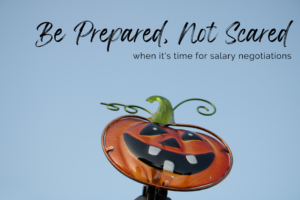|
|
Recently, I was working with a client to prepare her for some upcoming job interviews. When doing a mock interview with her, I noticed she made the same mistake most people make when answering behavioral interview questions. (She answered in generalities instead of specific examples.)
When I showed her the method she should use to properly answer such questions, she equated it to having to “show her work” like she had to in math class during her school days.
I hadn’t thought about it this way before, but she was right. You can give a good answer to a question or problem. But leaving off the method of how you arrived at your answer doesn’t indicate what you’ve learned. And employers ask behavioral interview questions to see how and what you’ve learned from your past experience.
Show your work in your job interviews
Give specific examples
The best way to stand out in the job interview is to include with your answers how you arrived at them. To do this, it’s often best to share one specific example. Lumping multiple examples into one general answer isn’t quite as effective as the story you tell about a particular incident. This is because details paint a visual picture in the mind of your listener, making you more memorable to him or her.
The above is always true for behavioral interview questions, but can also be true for other common questions like, “What is your greatest strength?” Don’t just say what your greatest strength is. Show your work by giving a specific example of a time when you demonstrated this strength. Paint a picture with some details.
Show and tell
Another way to show your work is to create a professional portfolio of tangible samples of your past work assignments. This can be a hard copy format to take with you to a job interview, and a digital format to link to from your resume or your LinkedIn profile.
When putting together your portfolio, always choose quality samples over quantity. Also, make sure you’re not including anything your current or past employers would deem proprietary or confidential.
Use it to “show and tell” about your skills when answering skills-based interview questions. To learn more about how to present your professional portfolio in an interview, check out the video tutorial, The 3 Super Powers of Successful Job Seekers.
Conclusion
It’s been a while since you’ve been in school. But not much has changed when it comes to having to show your work. Especially when interviewing for a new job or trying to secure a promotion or pay raise. Keeping this in mind when preparing for interviews will help you move forward in your job search and your career path.
If you also have an upcoming interview and would like to receive coaching or schedule a mock interview, click here to complete the paNASH intake form. I’d love to help you land a job offer!
Related resources
- The Secret to Answering Behavioral Interview Questions
- What Is the Best Way to Describe Yourself in a Job Interview?
- How to Answer “What Is Your Greatest Weakness?”
- Video tutorial: The 3 Super Powers of Successful Job Seekers






